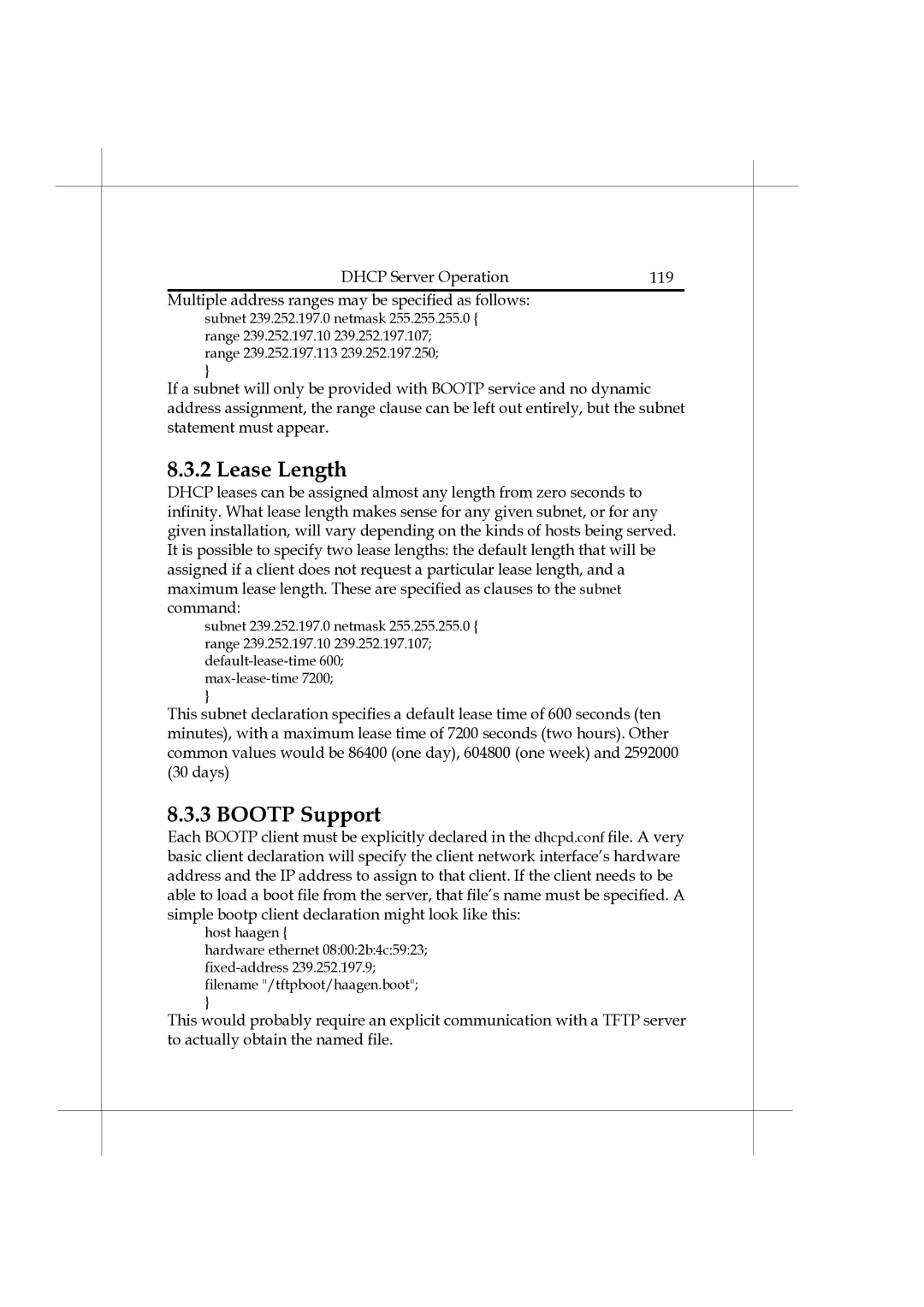
Heritage Series ADSL Bridge/ Router | 119 |
DHCP Server Operation |
Multiple address ranges may be specified as follows: subnet 239.252.197.0 netmask 255.255.255.0 { range 239.252.197.10 239.252.197.107;
range 239.252.197.113 239.252.197.250;
}
If a subnet will only be provided with BOOTP service and no dynamic address assignment, the range clause can be left out entirely, but the subnet statement must appear.
8.3.2 Lease Length
DHCP leases can be assigned almost any length from zero seconds to infinity. What lease length makes sense for any given subnet, or for any given installation, will vary depending on the kinds of hosts being served. It is possible to specify two lease lengths: the default length that will be assigned if a client does not request a particular lease length, and a maximum lease length. These are specified as clauses to the subnet command:
subnet 239.252.197.0 netmask 255.255.255.0 { range 239.252.197.10 239.252.197.107;
}
This subnet declaration specifies a default lease time of 600 seconds (ten minutes), with a maximum lease time of 7200 seconds (two hours). Other common values would be 86400 (one day), 604800 (one week) and 2592000 (30 days)
8.3.3 BOOTP Support
Each BOOTP client must be explicitly declared in the dhcpd.conf file. A very basic client declaration will specify the client network interface’s hardware address and the IP address to assign to that client. If the client needs to be able to load a boot file from the server, that file’s name must be specified. A simple bootp client declaration might look like this:
host haagen {
hardware ethernet 08:00:2b:4c:59:23;
}
This would probably require an explicit communication with a TFTP server to actually obtain the named file.
